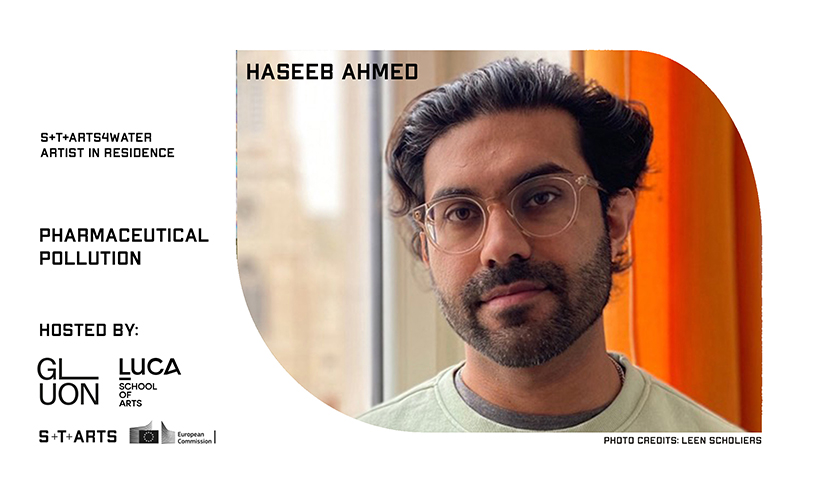A conversation with Haseeb Ahmed about the research phase of his residency.
Based in Brussels for his S+T+ARTS project, Haseeb Ahmed wants to explore the journey that pharmaceuticals take from the point of human consumption and excretion to water streams and nonhuman life. His aim is to look for evidence of antidepressants and birth control in the ecosystem and to highlight the discrepancy between the necessity of these drugs versus the polluting effects they may have on the world around us.
During the research phase of his research, Haseeb has met up with private companies, delegates from different water sites, members of the university in Gent and pharmaceutical agents. As he learned that most of these collaborators have a more engineering mentality compared to his own artistic point of view, he is now working on specific questions that can help him conceptualize his project. Questions such as ‘how do the water sites deal with certain pollutants, especially when these pharmaceutical particles are so difficult to detect?’ or ‘how are pharmaceutical drugs such as birth control manufactured and what are their polluting elements?’ are currently the driving force behind his research.
Out of all the collaborators he contacted for his research, Haseeb reflected that it was the hardest to engage in active contact with the pharmaceutical companies. Although he emphasized the importance of representing them for his project due to the vitality of their medicines, the fact that the pharmaceutical partner is a consortium instead of an individual agent might have complicated the contact thus far. Besides this, one other challenge for Haseeb is the timeline. For his project, he wants to work with existing materials that are already developed by his partners in the field. Given that these materials require deeper understanding of elements that Haseeb was not familiar with before (e.g. certain pumps, filters, bacteria), it takes a lot of time to master them properly. As his next expert group meeting is scheduled for March and the aim is to present some preliminary prototypes, he does sometimes feel like time is catching up with him.
Although it is still too early to discuss befores and afters, Haseeb expects his project to eventually take the shape of a sculptural installation, thereby using technologies and tools that are used by his partners in water treatment. He wants to take what already exists and present it in a new, tangible way. “One of the main, potentially unpleasant aspects is that 90% of pharmaceutical pollution comes from human urine. After medicine has its effect and is consumed it gets released though the urine stream. I would like to make this an aspect of my artwork, however I might want to consider the shock value this might have on my audience…”
Text: Cato Boeschoten

